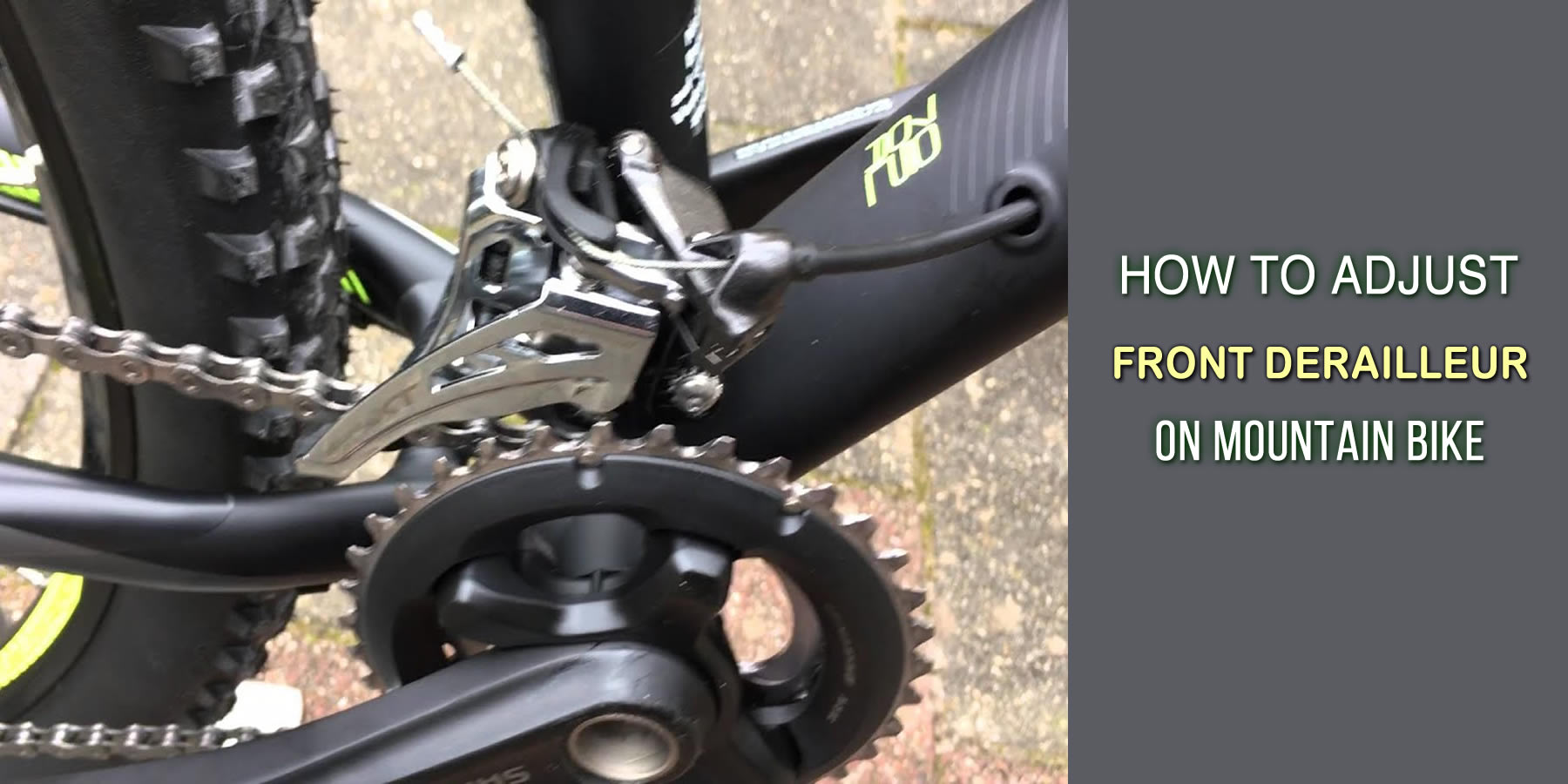Adjusting the derailleur on a mountain bike is one of the most common issues most of the bike rider face. Because some technical elements required to set it up appropriately, otherwise, it bothers while riding.
But, anyone can do it following some little steps. Also, you don't need to be a pro rider for any reason.
And through this practical lesson, you will exactly learn how to adjust the front derailleur on a mountain bike without facing a single obstacle.
So in the future, whenever you face this challenge, follow the same steps. Now carefully read the instruction, adjust the derailleur, and ride your own pace.

Instructional Steps for Adjusting the Front Derailleur on A Mountain Bike:
The problem with most of the rider see so many things at once and try nothing and get confused. So I invite you to follow the exact sequence the way we structured here. You will never have this challenge again.
Before we get started, I want you to let you know the crucial components of the derailleur. Because we think it is vital to know the parts you are using. And these are Anchor Bolt, Pivot Points, Derailleur Cage, Positions Clamp, Lower and Higher Gear limit. When you are done, start adjusting the derailleur.
Adjust The Height:
Firstly, adjust the height of derailleurs with angle and use its positioning clamp at the same time. It automatically joined the Bike Frame and the derailleur together.
You may think it's a little bit hard to do. In reality, it's not. While tightening up the clamp bolt set angle and height together.
To make your job a little easier. Join the clamp harder; as a result, it naturally gets secure. Then move around it by your hand and keep it loose.
If you want perfect adjustment, place the derailleur bottom and sprocket teeth very close. Experts’ said___ "2MM spacing is good". But don't take it as a BIBLE. Lower cage shift smarter.
Finally, give a quick check on the curvature of your largest chain with your outer cage of the derailleur and see none of them are rubbing each other. If it's OK, then you are done this step.
You May Read Our Most Popular Mountain Bike Reviews
Adjust The Angle:
Now you get the derailleur angel is completely set. Sometimes not all the derailleur shape cage is perfectly straight. Be patient, my friend. For the straight derailleur shape cage, line up the cage centerline with the frame centerline. When you get the angle correct, finally tighten up your positioning clamp, that is all.
Limit Screws:
Technically you will find two gear-limit screws on the bike derailleurs. If you use the old model bike derailleurs, you might find the low-gear quite closer near the frame. But some of the modern derailleurs designed with reversed screw’s positioning. So it will make your job quite more accessible than the older one.
Low Gear Set-Up:
When you set up the low-gear, here two components, you need to work together. First, check the chain shift to the biggest rear sprocket with in front of the shortest sprocket because low gear prevents derailleur from changing the smallest chain wheel. And it automatically throws the chain to the base bracket shell.
In this case, if you find it loose, then the chain may fall off while downshifting the small chainring. Now check the small chainring, and if it too tight, then it wouldn't shift. So the job is here to adjust the internal plate that smoothly allows it to clean your bike chain in the lowest gear.
If your bike designed with a triple chainring structure, try to keep a little bit extra gap, and it's necessary.
Setting Up High Gear:
Setting up the high bike gear is typically almost the same job as the lower one. The distinction between two is to shift the bike chain into the highest gear. Keep rear shortest sprocket in front of the biggest sprocket.
Remember, for the lower gear, you shifted the biggest sprocket with the tiniest sprocket. But here you do the opposite. When you are in this situation, the higher gear allows the chain to shift past the larger chain wheel and immediately hit the chain to pedals. And it really convenient to stop cage when it keeps aside the derailleur chain on the largest chainring.
Adjust The Shifting Position:
In the last step before tightening up the cable bolt, confirm the front shifter already in the low gear. Now pull your shift cable for preventing any single extra slack. So you will get both limit screws to adjust and shift it back to the rear largest sprocket with the shortest sprocket.
Sometimes the chain goes rubbing together. To ideally prevent this shift middle gear from derailleur, then run it thoroughly the rear sprockets range. Now check again to see none of the chains is rubbing any of the sides of your outer derailleur cage.
Still, it's rubbing? Adjust trim using barrel adjuster from the outer shift lever.
For older derailleur friction shifter, compromise manual trim adjuster when you ride. Then you are all done.
Conclusion:
Finally, the lesson you got here, you must follow the same to get the same result.
The essential part of the Front Derailleur Adjustment is how the derailleur designed. As you know, the older model derailleur is quite a manual structure that takes a little bit of time to adjust.
But some newer models are much customized and give you an automated process to adjust.
Practically, it doesn't matter whether you use the older or newer model. Because when you know exactly know how to adjust it appropriately, then nothing makes you overwhelmed for any reason. Now adjust derailleur on your own and experience the smart riding.

Hello Guys! I am John Reese, a professional biker and my hobby is biking! I have been biking for last 10 years and I love using bikes while outing as well. Based on my experiences with the different type of bikes (mountain bikes, road bikes and hybrid bikes); I am sharing my opinion about various bikes so that a beginner can get started right away. Happy reading!

